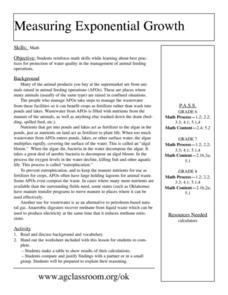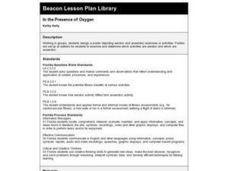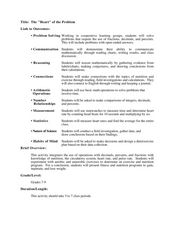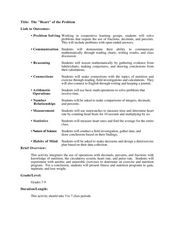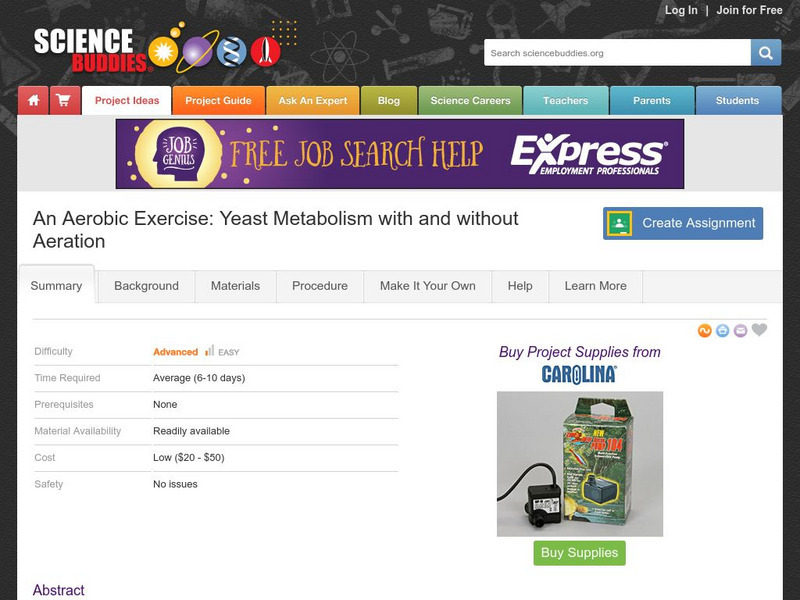Curated OER
Are you going to eat that?
Students identify and define composting. STudents compare and contrast aerobic and anaerobic composting. Students illustrate the benefits of composting and other methods to reuse, recycle, reduce, and respond. Students identify through...
Curated OER
De"compost"ition
Learners develop an understanding of the decomposition process and the parameters which influence the rate at which it occurs.
Gustavus Adolphus University
Five Physical Fitness Components
Five learning stations for five physical fitness components: cardiovascular exercise, body composition, muscle endurance, muscular strength, and flexibility. As pupils progress through each station, they will complete assigned tasks,...
Laguna Middle School
Personal Physical Fitness Plan
Sticking to a physical fitness plan can be tricky. Support young athletes' personal fitness goals with a helpful and strategie lesson plan. They reflect on their daily habits through a pre-assessment and questionnaire, create short and...
Curated OER
Bacteria: Friend or Foe?
Young scholars examine a variety of environmental and industrial roles of bacteria. explore where bacteria can be found and distinguish bacteria from other organisms.
Curated OER
Measuring Exponential Growth
Middle schoolers reinforce math skills while learning about best practices
for protection of water quality in the management of animal feeding
operations. They make a table to show results of their calculations and compare and justify...
American Physiological Society
An Inquiry into Alcoholic Fermentation
Introduce life science learners to their new "best buds" yeast! Using a wide variety of materials, lab groups design an experiment that illustrates how yeast acquires the resources it needs to undergo cellular respiration. The teacher's...
Curated OER
In the Presence of Oxygen
Third graders, in groups, classify different activities as aerobic or anaerobic. They create posters displaying their categorizations and then take notes on each other's posters.
Curated OER
Heart Smart in a Heart Beat
As an introductory activity, young statisticians measure their heart rate at rest and after exercise and compute the mean and median, and create a box & whisker plot. This is followed by watching a video (that no longer seems to...
Curated OER
Energy in a Cell
In this cell energy instructional activity, students are given clues about the light capturing process in plants and the energy producing reactions in animals to complete a crossword puzzle.
Curated OER
Your Energy Out
What kinds of physical activity should youngsters do more of? What kind of activities should they do enough of? What kind of activities should they do less of? Studies say that children should be doing about an hour of vigorous activity...
Curated OER
Exercise for the Heart
Third graders identify the relationship between physical activity and a healthy heart. Then they describe the long-term effects of daily physical activity on the heart. Students also distinguish aerobic from anaerobic exercises and ...
Curated OER
Microbiology
In this biology worksheet, students identify and locate various vocabulary terms pertaining to microbiology. There are 54 biology terms located in the word search.
Curated OER
Respiration in Sammy's Cells
Students practice translating biological ideas into graphical representations and explore respiration in the context of an exercise session in this 50 minute lesson on aerobic and anaerobic respiration. The lesson includes a question...
Curated OER
Marine & Aquatic Habitats Activities - Terrestrial Forests vs. Kelp Forests
Students discuss concept and specificity of habitats, both marine and terrestrial, list similarities and differences in the habitats of a kelp forest and a terrestrial forest, compare types of organisms that occupy corresponding types of...
Curated OER
The "Heart" of the Problem
Students create an exercise and nutrition program. In this interdisciplinary lesson, students use calculations of exercises plus their corresponding effects on the body and nutritional values of food to derive a health plan. Students...
Curated OER
The "Heart" of the Problem
Students explore mathematical operations while studying nutrition. For this physical fitness lesson, students explore calories, pulse rate, and the circulatory system. Students use mathematical data to create a healthy physical fitness...
Curated OER
What Should I Know about Respiration
How are kids supposed to know what to study for that cellular respiration test? With a study guide or reading guide like the one found here. With three pages of questions important to the understanding of respiration and the processes...
Curated OER
What's Up, Doc?
Students explore cardiovascular fitness and create and follow a fitness program. They document the benefits of participating in a fitness program.
Curated OER
Muscles for Locomotion
In this muscles activity, students review the characteristics of the 3 types of muscles: smooth, skeletal, and cardiac. This activity has 7 matching and 4 short answer questions.
Science Buddies
Science Buddies: An Aerobic Exercise: Yeast Metabolism and Aeration
This is a straightforward project on glucose metabolism in yeast. You'll grow yeast under aerobic and anaerobic conditions and measure carbon dioxide output to assess metabolic efficiency.
WebMD
Web Md: Weight Loss Exercise and Weight Control
WebMD provides a page on exercise. Content discussed includes the benefits of exercise, what type of exercise is best to do, the difference between aerobic and anaerobic exercise, and some examples of easy-to-do exercises.
CK-12 Foundation
Ck 12: Life Science: Muscles and Exercise
[Free Registration/Login may be required to access all resource tools.] Regular physical exercise is important in preventing lifestyle diseases such as cardiovascular disease, some types of cancer, type 2 diabetes, and obesity. Regular...







